Kia Sportage: Engine cooling system
The high-pressure cooling system has a reservoir filled with year-round antifreeze coolant. The reservoir is filled at the factory. Check the antifreeze protection and coolant level at least once a year, at the beginning of the winter season, and before traveling to a colder climate. Checking the coolant level
WARNING - Removing radiator cap • Never attempt to remove the radiator cap while the engine is operating or hot. Doing so might lead to cooling system and engine damage and could result in serious personal injury from escaping hot coolant or steam. • Turn the engine off and wait until it cools down. Use extreme care when removing the radiator cap. Wrap a thick towel around it, and turn it counterclockwise slowly to the first stop. Step back while the pressure is released from the cooling system. When you are sure all the pressure has been released, press down on the cap, using a thick towel, and continue turning counterclockwise to remove it. • Even if the engine is not operating, do not remove the radiator cap or the drain plug while the engine and radiator are hot. Hot coolant and steam may still blow out under pressure, causing serious injury.
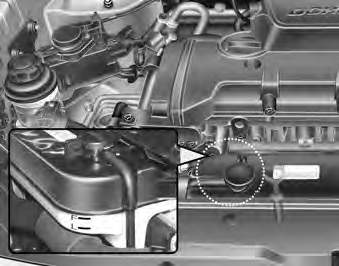
Check the condition and connections of all cooling system hoses and heater hoses. Replace any swollen or deteriorated hoses.
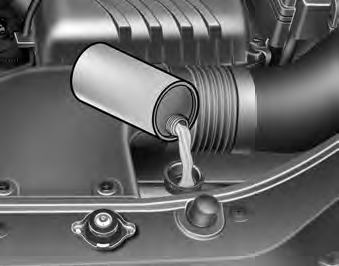
The coolant level should be filled between F and L marks on the side of the coolant reservoir when the engine is cool. If the coolant level is low, add enough specified coolant to provide protection against freezing and corrosion. Bring the level to F, but do not overfill. If frequent additions are required, see an Authorized Kia Dealer for a cooling system inspection. Recommended engine coolant • Use only soft (de-mineralized) water in the coolant mixture. • The engine in your vehicle has aluminum engine parts and must be protected by an ethylene-glycolbased coolant to prevent corrosion and freezing. • DO NOT USE alcohol or methanol coolant or mix them with the specified coolant. • Do not use a solution that contains more than 60% antifreeze or less than 35% antifreeze, which would reduce the effectiveness of the solution. For mixture percentage, refer to the following table.
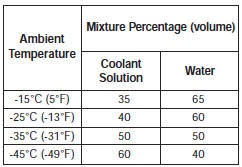
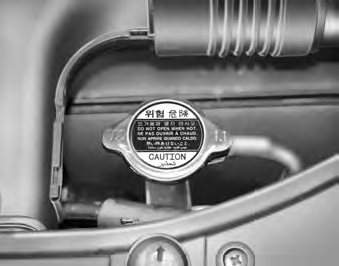
WARNING - Radiator cap Do not remove the radiator cap when the engine and radiator are hot. Scalding hot coolant and steam may blow out under pressure causing serious injury.
Changing the coolant Have coolant changed by an authorized KIA dealer according to the Maintenance Schedule at the beginning of this section.
CAUTION Put a thick cloth or fabric around the radiator cap before refilling the coolant in order to prevent the coolant from overflowing into engine parts such as generator.
WARNING - Coolant • Do not use radiator coolant or antifreeze in the washer fluid reservoir. • Radiator coolant can severely obscure visibility when sprayed on the windshield and may cause loss of vehicle control or damage to paint and body trim.
Brakes and clutch

Checking brake/clutch fluid level Check the fluid level in the reservoir periodically. The fluid level should be between MAX and MIN marks on the side of the reservoir. Before removing the reservoir cap and adding brake/clutch fluid, clean the area around the reservoir cap thoroughly to prevent brake/clutch fluid contamination. If the level is low, add fluid to the MAX level. The level will fall with accumulated mileage. This is a normal condition associated with the wear of the brake linings. If the fluid level is excessively low, have the brake system checked by an Authorized Kia Dealer. Use only the specified brake/clutch fluid. (Refer to "Recommended lubricants and capacities" in section 8.) Never mix different types of fluid.
WARNING - Loss of brake fluid In the event the brake system requires frequent additions of fluid, the vehicle should be inspected by an Authorized Kia Dealer.
WARNING - Brake fluid When changing and adding brake/clutch fluid, handle it carefully. Do not let it come in contact with your eyes. If brake/clutch fluid should come in contact with your eyes, immediately flush them with a large quantity of fresh tap water. Have your eyes examined by a doctor as soon as possible.
NOTICE Do not allow brake/clutch fluid to contact the vehicle's body paint, as paint damage will result. Brake/clutch fluid, which has been exposed to open air for an extended time should never be used as its quality cannot be guaranteed. It should be thrown out. Don't put in the wrong kind of fluid. A few drops of mineral-based oil, such as engine oil, in your brake clutch system can damage brake clutch system parts.
Parking brake
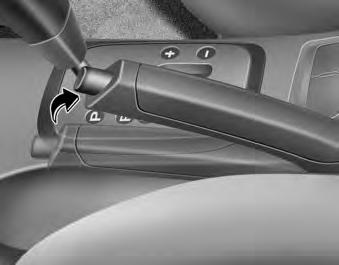
Checking the parking brake Check the stroke of the parking brake by counting the number of “clicks’’ heard while fully applying it from the released position. Also, the parking brake alone should securely hold the vehicle on a fairly steep grade. If the stroke is more or less than specified, have the parking brake adjusted by an Authorized Kia Dealer. Stroke : 7~8 “clicks’’ at a force of 20 kg (44 lbs, 196 N).
Power steering

Checking the power steering fluid level With the vehicle on level ground, check the fluid level in the power steering reservoir periodically. The fluid should be between MAX and MIN marks on the side of the reservoir at the normal temperature. Before adding power steering fluid, thoroughly clean the area around the reservoir cap to prevent power steering fluid contamination. If the level is low, add fluid to the MAX level. In the event the power steering system requires frequent addition of fluid, the vehicle should be inspected by an Authorized Kia Dealer.
NOTICE • To avoid damage to the power steering pump, do not operate the vehicle for prolonged periods with a low power steering fluid level. • Never start the engine when the reservoir tank is empty. • When adding fluid, be careful that dirt does not get into the tank. • Too little fluid can make the steering wheel heavier or strange noise can be generated. • The use of the non-specified fluid could reduce the effectiveness of the power steering wheel and cause damage to it.
Use only the specified power steering fluid. (Refer to "Recommended lubricants and capacities" in section 8.) Power steering hose Check the connections for oil leaks, severe damage and the twists in the power steering hose before driving.
See also:
Steering Wheel
Steering Wheel
Check the play of the steering wheel by gently turning it from left to right
and measuring the distance that it moves before you feel slight resistance. The
play should be between the specified values. Check that the steering w ...
Traction control system (TCS)
(If installed)
On slippery road surfaces, the traction control
system (TCS) limits the drive wheels from
spinning excessively, thus helping the car to
accelerate. It also helps to provide sufficient
driving force and steering performance a ...

 Owner maintenance
Owner maintenance